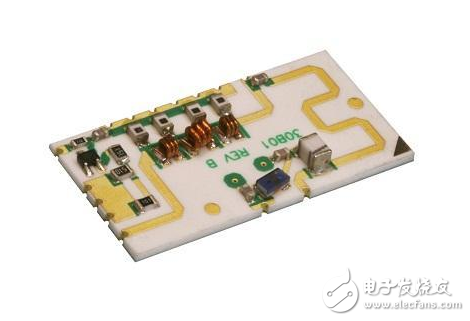High-speed circuits usually refer to digital circuits that operate very fast, which is related to the frequency of the clock pulses required by digital circuits. These pulses are rectangular pulse waves. The high-frequency circuit generally refers to the radio wave frequency, which is a positive-rotation wave. Generally, the radio wave transmitting and receiving circuits are called high-frequency circuits, and the high-frequency circuits are sometimes relative. For example, the intermediate frequency of a television set is actually higher than that of a radio. The circuit operates at a higher frequency. 
There is no strict distinction between high-frequency and high-speed circuits, but only a general category of artificial design for different design problems. Here are some of the understandings I have compiled before.
"High-speed circuits" have become a term often mentioned by today's electronics engineers, but what exactly is a high-speed circuit? This is indeed a concept of “familiarity†and “fuzzinessâ€. In fact, the industry does not have a unified definition of high-speed circuits. Generally, there are many views on the definition of high-speed circuits: Some people think that if the frequency of digital logic circuits reaches or exceeds 45MHZ~50MHZ, and works above this frequency, The circuit already accounts for a certain amount of the entire electronic system (for example, 1/3), which is called high-speed circuit; others think that there is no big connection between high-speed circuit and frequency, and whether high-speed circuits only depend on their rise time; Others believe that high-speed circuits are circuits that we have not touched in the past years, or that can produce and take into account the skin effect; more people define the high-speed quantization, that is, when the digital signals in the circuit are on the transmission line When the delay is greater than 1/2 rise time, it is called a high speed circuit. The final definition is accepted by most designers.
In addition, there is another concept that is easy to cause confusion is the concept of "high frequency circuit". What is the difference between "high frequency" and "high speed"? For high frequencies, many people understand that the signal frequency is higher. Although this view cannot be said to be wrong, for high-speed electronic design engineers, the understanding should be more profound. We should consider the natural frequency of the signal. When the signal is transmitted with the accompanying effects of higher-order harmonics, we generally use the following formula to define the emission bandwidth of the signal, sometimes called the EMI emission bandwidth:
F=1/(Tr*Ï€), F is the frequency (GHz); Tr (nanosecond) refers to the rise or fall time of the signal.
Usually when F>100MHz, it can be called high frequency circuit. Therefore, in digital circuits, whether it is a high-frequency circuit is not the level of the signal frequency, but mainly depends on the rising edge and the falling edge. According to this formula, we can estimate that when the rise time is less than 3.185 ns, we think it is a high frequency circuit.
In general, if you must compare the "high-speed circuit" with the "high-frequency circuit", then the high-speed circuit mainly depends on the relationship between the rise/fall time of the signal and the delay of the transmission line. Of course, it may be greater than 1/2. The rise time may also be 1/4, 1/6 or 1/8 depending on the application. For the definition of high-frequency circuits, it is mainly based on the spectrum generated by the edges, which is the characteristic of the signal itself, regardless of the factors of the transmission line. Of course, the emission bandwidth is more than 100M, 500M, or 1GHz, which is not strictly defined, depending on the application.
Regular GFCI Receptacle Outlet
Lishui Trimone Electrical Technology Co., Ltd , https://www.3gracegfci.com